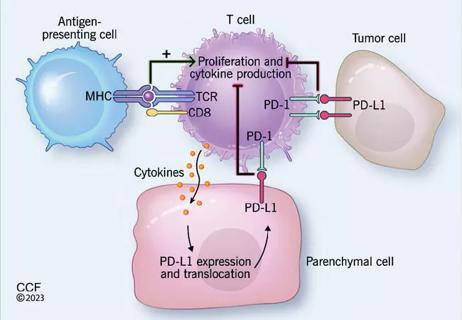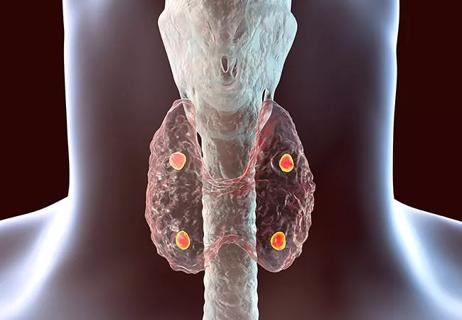There is a need for ongoing monitoring
Cleveland Clinic researchers from the Department of Endocrinology, Diabetes and Metabolism and the Bariatric and Metabolic Institute have been collaborating to minimize the progression of type 2 diabetes in obese patients for some time. Last year the group published five-year outcomes from the groundbreaking STAMPEDE study showing the benefit of bariatric surgery in these patients, including significant improvements in weight loss, glycemic control, triglyceride and HDL cholesterol levels, use of insulin, and quality of life.
Cleveland Clinic is a non-profit academic medical center. Advertising on our site helps support our mission. We do not endorse non-Cleveland Clinic products or services. Policy
Now, the group has just published findings from an ancillary analysis of the STAMPEDE data. This analysis shows that while the benefits are sustained five years post-surgery, these patients do have chronically elevated bone turnover markers, a sign that they are at increased risk for fractures.
“Our study validates the findings of others, namely that these patients face increased risk for both osteoporosis and fractures,” says Sangeeta Kashyap, MD, from the Department of Endocrinology, who was an author on both studies. “While this may be a drawback, we have to weigh the risk of potential fractures against the benefits of improved glycemic control achieved by these surgeries.
The ancillary study sought to measure the five-year outcomes of bariatric surgery versus guideline-recommended intensive medical therapy on bone turnover in 95 obese patients (median BMI: 36.5; range 27-43) with uncontrolled type 2 diabetes (median HbA1c: 9.3). Patients had been randomized in the STAMPEDE trial to intensive medical therapy (IMT; n = 25), Roux-en-Y gastric bypass (RYGB; n = 37), or sleeve gastrectomy (SG: n=33) for diabetes treatment. Osteocalcin (OC, a bone formation marker), serum C-telopeptide of type 1 collagen (CTX, a bone resorption marker), and intact parathyroid hormone (PTH) were assessed at baseline and five years post-surgery. (For more on the STAMPEDE trial, visit here.)
At five years, both surgical groups had noticeably significant percent increases in CTX and OC compared to the IMT group (see table). The decrease in BMI was related to increase in CTX for all 95 patients. While the surgical groups also had significant increases in PTH, the IMT group did not. However, the authors note that PTH values did not differ significantly among the groups at five years.
| Intensive Medical Therapy (n =25) | Roux-en-Y Bypass (n =37) | Sleeve Gastrectomy (n =33) | |||||
|---|---|---|---|---|---|---|---|
| Baseline | 5 years | Baseline | 5 years | Baseline | 5 years | ||
| Serum C-telopeptide of type 1 collagen (CTX, ng/mL) | 0.27±0.11 | 0.31±0.18 | 0.22±0.10 | 0.49±0.25 | 0.25±0.14 | 0.36±0.20 | |
| Percent change | 29.8±92% (p=0.12) | 137±108% (p<0.001) | 61.1±90% (p<0.001) | ||||
| Osteocalcin (OC, ng/mL) | 11.2±3.8 | 14.3±8.8 | 9.6±3.1 | 23.3±11.8 | 10.9±4.1 | 17.4±6.8 | |
| Percent change | 43.8±121.1% (p<0.83) | 138.9±19% (p<0.001) | 71±69% (p<0.001) | ||||
| Parathyroid hormone (PTH, pg/mL) | 42.6±14.7 | 44.14.6 | 39.6±17.1 | 56.5±24.4 | 44.4±25.8 | 50.7±23.8 | |
| Percent changed | Not reported | ||||||
| Baseline | |||||||
| Intensive Medical Therapy (n =25) | |||||||
| 5 years | |||||||
| Roux-en-Y Bypass (n =37) | |||||||
| Baseline | |||||||
| Sleeve Gastrectomy (n =33) | |||||||
| 5 years | |||||||
| Baseline | |||||||
| 5 years | |||||||
| Serum C-telopeptide of type 1 collagen (CTX, ng/mL) | |||||||
| Intensive Medical Therapy (n =25) | |||||||
| 0.27±0.11 | |||||||
| Roux-en-Y Bypass (n =37) | |||||||
| 0.31±0.18 | |||||||
| Sleeve Gastrectomy (n =33) | |||||||
| 0.22±0.10 | |||||||
| 0.49±0.25 | |||||||
| 0.25±0.14 | |||||||
| 0.36±0.20 | |||||||
| Percent change | |||||||
| Intensive Medical Therapy (n =25) | |||||||
| 29.8±92% (p=0.12) | |||||||
| Roux-en-Y Bypass (n =37) | |||||||
| 137±108% (p<0.001) | |||||||
| Sleeve Gastrectomy (n =33) | |||||||
| 61.1±90% (p<0.001) | |||||||
| Osteocalcin (OC, ng/mL) | |||||||
| Intensive Medical Therapy (n =25) | |||||||
| 11.2±3.8 | |||||||
| Roux-en-Y Bypass (n =37) | |||||||
| 14.3±8.8 | |||||||
| Sleeve Gastrectomy (n =33) | |||||||
| 9.6±3.1 | |||||||
| 23.3±11.8 | |||||||
| 10.9±4.1 | |||||||
| 17.4±6.8 | |||||||
| Percent change | |||||||
| Intensive Medical Therapy (n =25) | |||||||
| 43.8±121.1% (p<0.83) | |||||||
| Roux-en-Y Bypass (n =37) | |||||||
| 138.9±19% (p<0.001) | |||||||
| Sleeve Gastrectomy (n =33) | |||||||
| 71±69% (p<0.001) | |||||||
| Parathyroid hormone (PTH, pg/mL) | |||||||
| Intensive Medical Therapy (n =25) | |||||||
| 42.6±14.7 | |||||||
| Roux-en-Y Bypass (n =37) | |||||||
| 44.14.6 | |||||||
| Sleeve Gastrectomy (n =33) | |||||||
| 39.6±17.1 | |||||||
| 56.5±24.4 | |||||||
| 44.4±25.8 | |||||||
| 50.7±23.8 | |||||||
| Percent changed | |||||||
| Intensive Medical Therapy (n =25) | |||||||
| Not reported | |||||||
| Intensive Medical Therapy (n =25) | |||||||
| Roux-en-Y Bypass (n =37) | |||||||
| Sleeve Gastrectomy (n =33) | |||||||
Twelve patients reported 13 fractures during the 5-year period, including 11 in the feet/ankles and two in the distal arm/hand.
While these data demonstrate a correlation of increased bone turnover after weight loss, not a causative relationship, Dr. Kashyap notes they do show that patients who undergo bariatric surgery will need on-going monitoring for increased bone turnover.

Incidence, outcomes and management

Cleveland Clinic endocrinologists work to identify protocols for improving care

Cleveland Clinic’s Endocrinology & Metabolism Institute is working to offer novel opportunities and therapies for diabetes and kidney disease

New findings indicate the importance of achieving sufficient sleep levels in regard to personal glucose targets

A recent study evaluates the correlation between preoperative calcium and parathyroid hormone values as predictors of gland volume and multi-gland disease

A look at how to asses hCG elevation

As the diet’s popularity rises, certain considerations need to be taken when recommending it for patients with Type 1 diabetes

Findings suggest that the effectiveness of interventions may depend more on the frequency and delivery methods of the intervention rather than who is delivering the intervention